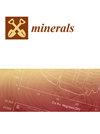塔里木盆地寒武系超深白云岩储层的主要控制因素
IF 2.2
4区 地球科学
Q2 GEOCHEMISTRY & GEOPHYSICS
引用次数: 0
摘要
塔里木盆地深-超深白云岩储层的成因对勘探和开发至关重要。塔里木盆地寒武系盐下白云岩储层分布广泛,超深储层勘探前景广阔。本研究基于大数据方法,收集和分析了塔里木盆地西部碳酸盐岩储层的孔隙度和渗透率数据,特别针对寒武系深层油气藏研究。该研究通过考察碳酸盐岩-蒸发岩序列的沉积演化和分布,并将沉积面、地层沉积厚度、断层带分布、源-储层组合等作为主要参考因素,探索孔隙度和渗透率的宏观分布模式,划分出三个有利储层带。从沉积期和成岩期的角度分析了塔里木盆地西部寒武纪碳酸盐岩储层发育的控制因素。分析了构造活动、沉积环境、微生物活动和压力溶解等因素,以了解孔隙度和渗透率分布差异的主要原因。综合分析表明,系列 2 碳酸盐岩储层的孔隙度和渗透率明显偏高,分布区域广泛,特别是在巴楚-塔中和柯坪地区。"三古隆、两洼地 "的地质格局促进了平台内斜和平台内滩涂的形成,为高孔隙度储层的出现创造了有利条件。储层发育的特征主要受成岩活动和构造活动的影响。庙岭期主要受成岩作用影响,渗透率高,但孔隙度较低,分布范围较小;干热古气候下的白云石化、溶解和充填过程对储层空间的形成和保存起了重要作用。在芙蓉期,柯坪和巴楚地区显示出较高的孔隙度和渗透率水平,以及较大的沉积厚度。厚白云岩层序中孔隙度的保持和发展主要受高能微粒浅滩沉积面和成岩过程中各种溶蚀作用的影响,这可能预示着较大的储量。本文章由计算机程序翻译,如有差异,请以英文原文为准。
The Main Controlling Factors of the Cambrian Ultra-Deep Dolomite Reservoir in the Tarim Basin
The genesis of deep-to-ultra-deep dolomite reservoirs in the Tarim Basin is crucial for exploration and development. The Cambrian subsalt dolomite reservoirs in the Tarim Basin are widely distributed, marking significant prospects for ultra-deep reservoir exploration. Based on big data methodologies, this study collects and analyzes porosity and permeability data of carbonate reservoirs in the western Tarim Basin, specifically targeting the Cambrian deep-oil and gas-reservoir research. Through an examination of the sedimentary evolution and distribution of carbonate–evaporite sequences, and considering sedimentary facies, stratigraphic sediment thickness, fault zone distribution, and source-reservoir assemblages as primary reference factors, the study explores the macro-distribution patterns of porosity and permeability, categorizing three favorable reservoir zones. The controlling factors for the development of Cambrian carbonate reservoirs on the western part of the Tarim Basin are analyzed from the perspectives of sedimentary and diagenetic periods. Factors such as tectonic activity, depositional environment, microbial activity, and pressure dissolution are analyzed to understand the main causes of differences in porosity and permeability distribution. Comprehensive analysis reveals that the porosity and permeability of the Series2 carbonate reservoirs are notably high, with extensive distribution areas, particularly in the Bachu–Tazhong and Keping regions. The geological pattern of “Three Paleo-uplifts and Two Depressions” facilitated the formation of inner-ramp and intra-platform shoals, creating conducive conditions for the emergence of high-porosity reservoirs. The characteristics of reservoir development are predominantly influenced by diagenetic and tectonic activities. The Miaolingian is chiefly affected by diagenesis, featuring high permeability but lower porosity and smaller distribution range; dolomitization, dissolution, and filling processes under a dry and hot paleoclimate significantly contribute to the formation and preservation of reservoir spaces. In the Furongian, the Keping and Bachu areas display elevated porosity and permeability levels, along with substantial sedimentary thickness. The conservation and development of porosity within thick dolomite sequences are mainly governed by high-energy-particulate shallow-shoal sedimentary facies and various dissolution actions during diagenesis, potentially indicating larger reserves.
求助全文
通过发布文献求助,成功后即可免费获取论文全文。
去求助
来源期刊

Minerals
MINERALOGY-MINING & MINERAL PROCESSING
CiteScore
4.10
自引率
20.00%
发文量
1351
审稿时长
19.04 days
期刊介绍:
Minerals (ISSN 2075-163X) is an international open access journal that covers the broad field of mineralogy, economic mineral resources, mineral exploration, innovative mining techniques and advances in mineral processing. It publishes reviews, regular research papers and short notes. Our aim is to encourage scientists to publish their experimental and theoretical results in as much detail as possible. There is no restriction on the length of the papers. The full experimental details must be provided so that the results can be reproduced.
 求助内容:
求助内容: 应助结果提醒方式:
应助结果提醒方式:


